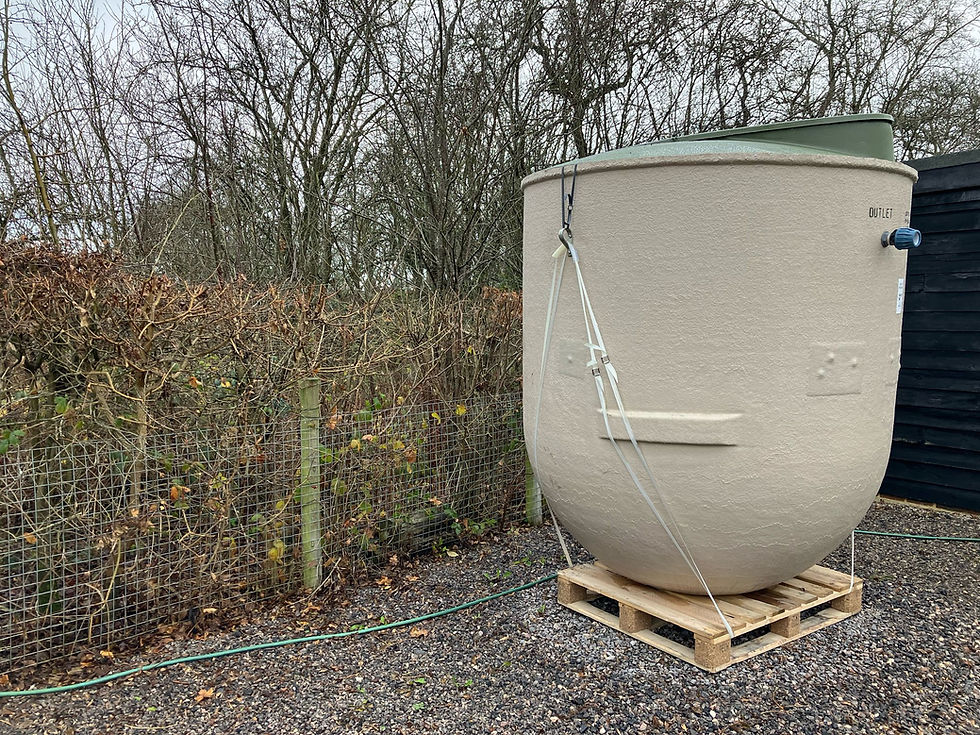What is a Cesspool?
- KPCesspool Services

- Oct 31
- 5 min read
Understanding what a cesspool is and how it functions is essential for homeowners and property managers who rely on off-grid waste management systems. While most properties in the UK are connected to the mains sewer network, many rural homes, farms, and businesses depend on cesspools or septic tanks to manage wastewater. This blog explains what a cesspool is, how it differs from other systems, and what responsibilities come with maintaining one.
What is a Cesspool?
A cesspool (sometimes called a cesspit) is a sealed, watertight underground storage tank that collects and holds wastewater and sewage from a property. Unlike a septic tank, a cesspool does not treat or process waste it simply stores it. Once the tank is full, it must be emptied by a licensed waste disposal company.
Cesspools are usually made from materials such as concrete, fibreglass, or plastic, and they are buried underground to prevent odours and leaks. They typically feature a single access cover for emptying and inspection.
The main purpose of a cesspool is to provide a containment solution where connection to a mains sewer or a drainage field is not possible. These are often used in remote rural areas or older properties that were never connected to the main sewage network.
How Does a Cesspool Work?
A cesspool works on a very simple principle: all household waste including water from toilets, sinks, showers, and appliances flows into the tank. Because it is sealed, the waste stays inside until it is professionally emptied.
The process can be broken down as follows:
Wastewater enters the cesspool from the property through underground pipes.
The waste accumulates in the tank over time, with no outlet or drainage.
Once the tank reaches around 70–80% capacity, it must be emptied by a vacuum tanker.
The collected waste is then transported to an authorised sewage treatment facility.
There is no bacterial breakdown, filtering, or drainage process in a cesspool. This makes regular emptying crucial to prevent overflow, contamination, or environmental damage.
Cesspool vs Septic Tank What’s the Difference?
Cesspools are often confused with septic tanks, but the two systems function very differently. The key distinctions are outlined below:
Feature | Cesspool | Septic Tank |
Purpose | Storage only | Treatment and partial drainage |
Structure | Fully sealed tank | Two or more chambers with drainage |
Maintenance | Requires frequent emptying | Requires periodic emptying and inspection |
Environmental Impact | Higher risk if not managed properly | Lower due to partial treatment |
Suitable For | Properties with no drainage option | Properties with suitable soakaway or drainage field |
If you are unsure which system your property uses, a quick inspection or a look at your maintenance records will help. A cesspool will always require complete emptying, while a septic tank will have an outlet for drainage.
Legal Requirements and Regulations
Cesspools in the UK are subject to strict regulations due to their potential environmental impact. The Environment Agency and local authorities monitor their installation and maintenance closely.
Key legal points include:
Cesspools must be watertight and constructed to prevent leaks or groundwater contamination.
They must have an alarm system to alert owners when the tank is nearly full.
Regular emptying by a licensed waste carrier is required, and disposal must take place at an approved facility.
Homeowners are responsible for ensuring their cesspool does not pollute land or water sources.
Unlike septic tanks or treatment plants, cesspools are not covered by the General Binding Rules for discharge, since they do not release any liquid waste. However, failure to maintain a cesspool properly can result in fines or enforcement notices from the Environment Agency.
How Often Should a Cesspool Be Emptied?
The frequency of emptying depends on the size of the tank and the number of people using it. On average, most cesspools need emptying every four to eight weeks. A small household might manage longer intervals, while larger families or businesses will require more frequent visits.
It is advisable to:
Arrange regular emptying on a set schedule to avoid overflows.
Keep a record of when the cesspool was last serviced.
Ensure that the waste is removed by a registered waste carrier.
Overflow or leakage can cause serious environmental damage and may lead to costly fines or property contamination. Regular maintenance is the only way to ensure safe and compliant operation.
Signs Your Cesspool Needs Emptying
Even with a set schedule, it’s important to recognise the early signs that your cesspool is nearing capacity. Common indicators include:
Slow draining sinks, toilets, or showers.
Strong or unpleasant odours near the tank or drainage area.
Gurgling noises in the plumbing system.
Wet patches or lush green grass over the cesspool area.
If any of these signs appear, it is best to book an emptying service immediately to prevent overflow.
Environmental Considerations
Cesspools pose a greater environmental risk than septic tanks or treatment plants because there is no waste processing involved. If a cesspool leaks, it can contaminate groundwater, harm wildlife, and pose health risks to humans.
To minimise environmental impact:
Choose a high-quality, sealed tank made from durable material.
Have the cesspool inspected regularly for cracks or damage.
Always use registered contractors for emptying and maintenance.
Proper upkeep not only protects the environment but also ensures that your system remains compliant with current waste management laws.
The Cost of Maintaining a Cesspool
Owning a cesspool involves ongoing maintenance costs, primarily for emptying and servicing. The total cost depends on tank size, access, and frequency of emptying.
On average, homeowners can expect to pay:
Between £100 and £500 per emptying, depending on the volume.
Additional fees for emergency callouts or difficult access.
Possible inspection or maintenance costs if issues are detected.
While cesspools can be expensive to maintain, they are sometimes the only practical option in remote or protected areas where connection to mains drainage is not possible.
Alternatives to a Cesspool
If your property currently relies on a cesspool, you may wish to consider switching to a more sustainable system such as a septic tank or sewage treatment plant. These systems offer long-term savings and are more environmentally friendly.
Before making any changes, consult a professional to assess:
Ground conditions and suitability for drainage fields.
Planning permission requirements.
Installation and maintenance costs.
Modern sewage treatment plants can significantly reduce emptying frequency and environmental impact, making them a popular choice for rural homeowners.
Conclusion
A cesspool is a sealed underground tank designed to store wastewater from properties not connected to the mains sewer system. While simple in design, it requires regular professional maintenance and emptying to prevent pollution and maintain compliance with environmental laws. If you own a property with a cesspool, staying informed about your responsibilities is crucial. Arrange scheduled emptying, keep accurate records, and ensure all work is carried out by licensed professionals. Proper management will protect both your property and the environment for years to come.




Comments